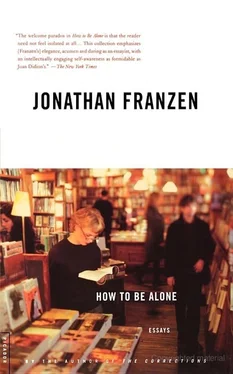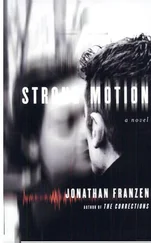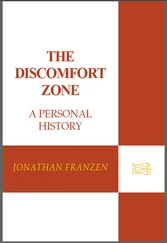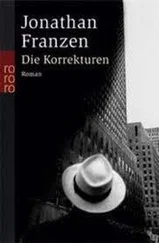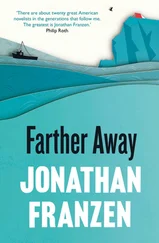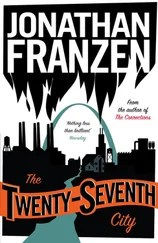“Fiction,” according to Birkerts, “only retains its cultural vitality so long as it can bring readers meaningful news about what it means to live in the world of the present.” He has in mind the broad-canvased, big-audience novels of Tolstoy and Dickens, of Bellow and Steinbeck, and indeed, there seems little doubt that the form is going the way of Shakespearean tragedy and Verdian opera. But the news of its passing is perhaps less meaningful than Birkerts makes it out to be. The audience may have collapsed in the last few decades, but cultural vitality has had to reconcile itself with silence, cunning, and exile throughout our technological century. Kafka told Max Brod he wanted his novels burned, Henry Green and Christina Stead fell into obscurity in their own lifetimes, Faulkner and O’Connor hid themselves away in the rural South. The most original and farseeing novelists of our own day not only accept the shadows but actively seek them. “Everything in the culture argues against the novel,” Don DeLillo said in a Paris Review interview. “This is why we need the writer in opposition, the novelist who writes against power, who writes against the corporation or the state or the whole apparatus of assimilation.”
The modern idea of the oppositional writer is a long-established tradition, and its modern variants have been around since at least the First World War, when the Austrian satirist Karl Kraus described himself as the “hopeless contrary” of the nexus of technology, media, and capital. Something that has taken longer to emerge, but is implicit in a work like The Gutenberg Elegies , is the idea of the oppositional reader . The paradox of literature’s elitism is that it’s purely self-selecting. Anyone who can read is free to be a part of it. And, as the informational elite continues to inoculate itself with literacy, a certain percentage of readers will inevitably, like the fabled marijuana smoker, get hooked on harder stuff. Likewise, as the ranks of the preterite swell with the downwardly mobile, restless souls will have ever greater reason to seek out methods of opposition—“to posit an elsewhere,” as Birkerts describes reading, “and to set off toward it.” The apparent democracy of today’s digital networks is an artifact of their infancy. Sooner or later, all social organisms move from anarchy toward hierarchy, and whatever order emerges from the primordial chaos of the Net seems as likely to be dystopian as utopian. The possibility of terminal boringness looms particularly large. But even if the digital revolution evolves into a free-market version of the Stalinist totality to which the Bolshevik revolution gave rise, the perverse effect may be the elevation of reading’s status. The world of samizdat, the flowering of a readership that memorized wholesale the poetry of Osip Mandelstam and Anna Akhmatova, ought to remind us that reading can survive, and even flourish, in exile.
Not just Negroponte, who doesn’t like to read, but even Birkerts, who thinks that history is ending, underestimates the instability of society and the unruly diversity of its members. The electronic apotheosis of mass culture has merely reconfirmed the elitism of literary reading, which was briefly obscured in the novel’s heyday. I mourn the eclipse of the cultural authority that literature once possessed, and I rue the onset of an age so anxious that the pleasure of a text becomes difficult to sustain. I don’t suppose that many other people will give away their TVs. I’m not sure I’ll last long myself without buying a new one. But the first lesson reading teaches is how to be alone.
[1995]
Two things that happened this year got me wondering why American cities in general and New York City in particular still bother to exist. The first was a plane ride back east from St. Louis. I sat next to a smart, pleasant woman from Springfield, Missouri, who was taking her eleven-year-old son to see relatives in Boston. The son had already scored points with me by removing a book, rather than a Game Boy, from his backpack, and when his mother told me that they were stopping in New York for two nights and that it was her son’s first visit there, I asked what sights they planned to see. “We want to go to the Fashion Café,” she said, “and we want to try to get on the Today show. There’s that window you can stand in front of? My son wants to do that.” I said I hadn’t heard about this window, and it certainly did sound interesting, but what about the Statue of Liberty and the Empire State Building? The woman gave me a funny look. “We’d love to see Letterman too,” she said. “Do you think there’s any chance of getting tickets?” I told her she could always hope.
The second thing that happened, after this reminder that for the rest of the country New York is now largely a city of the mind — at best, a site for the voodoo transformation of image into flesh — was a walk I took down Silicon Alley, in lower Manhattan. Silicon Alley is a district where the romance between downtown hipsters and the digital revolution has emerged from upper-floor bedrooms and set up house behind plate glass; I could see girls with fashion-model looks who wouldn’t be caught dead at the Fashion Café clustering around monitors while gurus with shaved heads helped them to configure. The Cyber Café, at 273 Lafayette Street, is a strange phenomenon. According to Web dogma, it ought not to exist. “Click, click through cyberspace,” William J. Mitchell writes in his recent manifesto, City of Bits . “This is the new architectural promenade. . a city unrooted to any definite spot on the surface of the earth, shaped by connectivity and bandwidth constraints rather than by accessibility and land values, largely asynchronous in its operation, and inhabited by disembodied and fragmented subjects who exist as collections of aliases and agents.” Yet the Cyber Café—to say nothing of the thousands of clubs and galleries and bookstores and noncyber cafés doing business within a mile of it — resembles nothing so much as an old-fashioned see-and-be-seen promenade.
Two New Yorks, then: one a virtual province of Planet Hollywood; the other a definite spot on the surface of the earth, populated by young people who even as they disembody and fragment themselves cannot resist the urge to Be There. Between the New York of Springfield’s imaginings and the New York of Lafayette Street is a disjunction that I feel well equipped to appreciate. I grew up in Missouri, and in the last fifteen years I’ve moved to New York six times. At no point was a job or a ready-made community waiting for me. As a self-employed writer, I can live anywhere I want, and it would make sense for me to choose an inexpensive place. Yet whenever I’m in one of those inexpensive places I feel drawn to reinflict New York on myself — this despite my fear of neighbors with televisions and pianos, my aversion to Gothamite provinciality, and my immunity to the city’s “cultural vitality.” When I’m here, I spend a lot of time at home; as a rule, I hit the museums and theaters only in a last-minute panic, before moving somewhere else. And, fond though I am of Central Park and the subways, I have no overpowering V for the Apple as a whole. The city has little of the soul-stirring desolation of Philadelphia, say, and none of the deep familiarity of Chicago, where I was born. What draws me back, again and again, is safety. Nowhere else am I safe from the question: Why here ?
Manhattan, in particular, offers the reassurance of high rents, which means that this is a city that people want to live in, not escape from. It’s no accident that Parisians adore New York. Its orthogonal street grid notwithstanding, they feel right at home here, since one of the things that makes Europe Europe is that its urban centers are still attractors, rather than repellers, of public life. Conversely, for an American Midwesterner like me, hungry for a feeling of cultural placement, New York is the next best thing to Europe.
Читать дальше
Конец ознакомительного отрывка
Купить книгу
